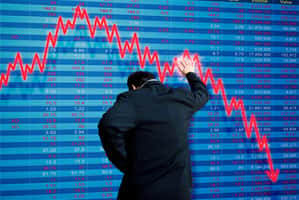Last week the Dow fell almost 3.5%, the worst week since January.

Value stocks and the overall reflation trade had an even worse week. In fact, regional banks fell 7.5%, the worst industry.
The Fed taking a more hawkish stance on interest rates, was the most commonly sighted reason for last week’s market weakness.
Understandably, with the market so historically overvalued, and predictions of inevitable market crashes all around us, many investors are worried about what the rest of 2021 has in store.
Here are the three reasons why prudent long-term investors have nothing to fear from the Fed raising interest rates and butchering our portfolios.
Reason 1: A Great Economy Is Almost Always Great For Stocks

The Fed is starting to seem more hawkish because the economy is growing at the fastest rate in almost 40 years, and expectations keep rising.
The same is true among economists in general.

(Source: FactSet Research)
Economists expect growth to eventually return to the normal 1.8% baseline that US demographics and productivity can sustain over time.

(Source: FactSet Research)
Moody’s estimates that with a big enough infrastructure bill passing US growth for this decade could be 0.3% higher.
But as things look now, economists and the Fed both expect 3.5% unemployment by the end of 2023.
That’s what it was pre-pandemic, the lowest rate in over 50 years.
The Fed Funds rate is expected to be 0.5%, representing 2 whole rate hikes, over the next 2.5 years.
The 10-year Treasury yield, the proxy for long-term interest rates, is expected to rise 1% over the next 2.5 years.
A gradual rise in long-term rates, created by a strong economy and the Fed tapering its bond-buying, is not something sensible investors should fear, and here’s why.
Reason 2: Rising Rates Are Good For Stock… Up To A Point

Since 1980 the average market intra-year peak decline has been 14.3%.
That sounds terrifying to many. But since 1945 it’s been the average market correction decline.
In other words, the market falling 5% to 15% is not something to be feared, but to be expected about once per year.
It’s the cost of owning stocks, the best performing asset class in history.

From 1965 to 2009 as long as 10-year yields were under 4.5% stocks went up as interest rates rose.
That’s because rising rates tend to mean a strong economy which is great for corporate earnings.
Since 2009, the modern low rate, QE era, as long as long-term rates were under 3.6%, stocks kept rising during rising interest rate environments.
What about inflation soaring in recent months?

Guess what? Since 1988 regardless of the inflation environment stocks have basically delivered the same returns over time.
Now that’s not to say that the market doesn’t periodically freak out if rates rise very quickly.
In February 2018 we saw a 10% correction over two weeks almost entirely due to a rapid run-up in 10-year yields.
However, there are two important things to remember about that.
First, the market was about 20% historically overvalued in January 2018. That followed 14 consecutive months of market gains, driven by tax-cut euphoria.
Second, according to Goldman Sachs’s quantitative analysts, as long as long-term rates are rising less than 35 basis points by month, stocks tend to do well in a rising rate environment.
Economists expect long-term rates to rise by 100 basis points over the next 2.5 years. That’s 3.3 basis points per month or about 1/10th the rate that causes the market to freak out over rising rates.
In other words, rising rates do not spell doom for the market, or even most stocks.
Yes, some crazy speculative bubbles, like popular meme stocks or hyper-growth names trading at absurd valuations, could crash. But that’s not likely to sink the broader market, much less the economy.
In part two of this series, I’ll explain the most important reason of all that you shouldn’t lose sleep over rising interest rates.
In fact, I’ll show you how you can maximize your portfolio’s gains and minimize volatility risk during such time periods.
SPY shares were trading at $423.20 per share on Wednesday morning, up $0.09 (+0.02%). Year-to-date, SPY has gained 13.93%, versus a % rise in the benchmark S&P 500 index during the same period.
About the Author: Adam Galas

Adam has spent years as a writer for The Motley Fool, Simply Safe Dividends, Seeking Alpha, and Dividend Sensei. His goal is to help people learn how to harness the power of dividend growth investing. Learn more about Adam’s background, along with links to his most recent articles. More...
More Resources for the Stocks in this Article
| Ticker | POWR Rating | Industry Rank | Rank in Industry |
| SPY | Get Rating | Get Rating | Get Rating |
| dow | Get Rating | Get Rating | Get Rating |





